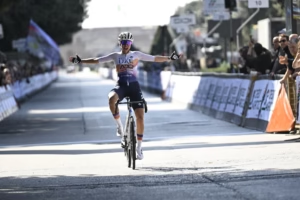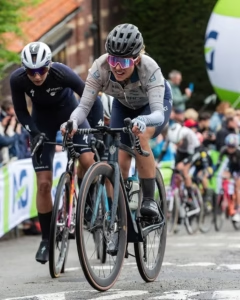The 2024 Tour de France route embarks on an unprecedented journey from Florence to Nice, breaking tradition with a Grand Départ in Italy and concluding on the French Riviera, bypassing Paris due to the upcoming Olympics. This significant shift marks the first time in the race’s history that it will either start in Italy or finish outside of the French capital. The 21-stage route, running from June 29th to July 21st 2024, introduces a blend of new challenges and classic elements, designed to test the peloton in both familiar and novel ways.
Table of Contents
ToggleThis year’s route features a mix of high-altitude mountain climbs, gravel sectors, and decisive time trials, providing a rigorous test for all riders. As the peloton navigates from the historic streets of Florence to the scenic finish in Nice, the 2024 Tour de France promises a blend of tradition and innovation, ensuring an unforgettable race for both participants and fans. The varied stages are set to push riders to their limits, keeping fans engaged throughout the event.
There’s a guide to the GC contenders for the 2024 Tour de France here.
2024 Tour de France Route Map

Key stages and climbs of the 2024 Tour de France
- Stage 1: A hilly 206km from Florence to Rimini, setting the tone with seven significant climbs.
- Stage 4: The race’s first mountain challenge, crossing the Alps with the formidable Col du Galibier.
- Stage 9: A 199km loop from Troyes featuring 14 gravel sectors, which could be decisive for GC contenders.
- Stage 14: The first mountain top finish at Pla d’Adet, following the Tourmalet climb, crucial for GC battles.
- Stage 15: On Bastille Day, the Tour’s toughest stage with five climbs and nearly 5,000m of ascent, finishing at Plateau de Beille.
- Stage 20: A 132.8km stage from Nice to Col de la Couillole, packed with four significant climbs, critical for final GC standings.
- Stage 21: A 33.7km individual time trial from Monaco to Nice, featuring climbs over La Turbie and Col d’Eze, ensuring the race for the yellow jersey continues to the very end.
Stage-by-stage guide to the 2024 Tour de France

Stage 1: Florence to Rimini, 206km
The Tour kicks off with a challenging 206km stage from Florence to Rimini. The route includes seven climbs, with the Côte de Saint-Marin at 4.8% over 7.1km being the final test before a flat finish. This hilly parcours suggests a puncheur or a climber might be the first to don the yellow jersey. Potential winner: Tadej Pogačar.

Stage 2: Cesenatico to Bologna, 199.2km
The second stage, covering 199.2km, features shorter but steeper climbs. The highlight is the San Luca climb, notorious for its 10.6% gradient over 1.9km. This could bring the GC contenders to the forefront early on. Potential winner: Tadej Pogačar.
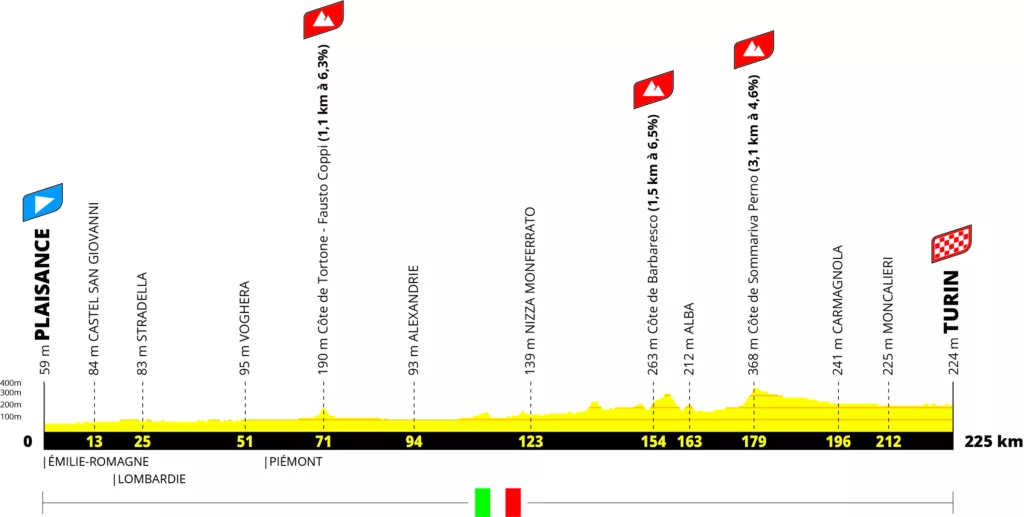
Stage 3: Piacenza to Turin, 230.8km
A lengthy 230.8km stage offers a flat terrain suitable for sprinters. Despite three modest climbs, the stage is likely to culminate in a bunch sprint in Turin, the longest stage of this year’s Tour. Potential winner: Jasper Philipsen.
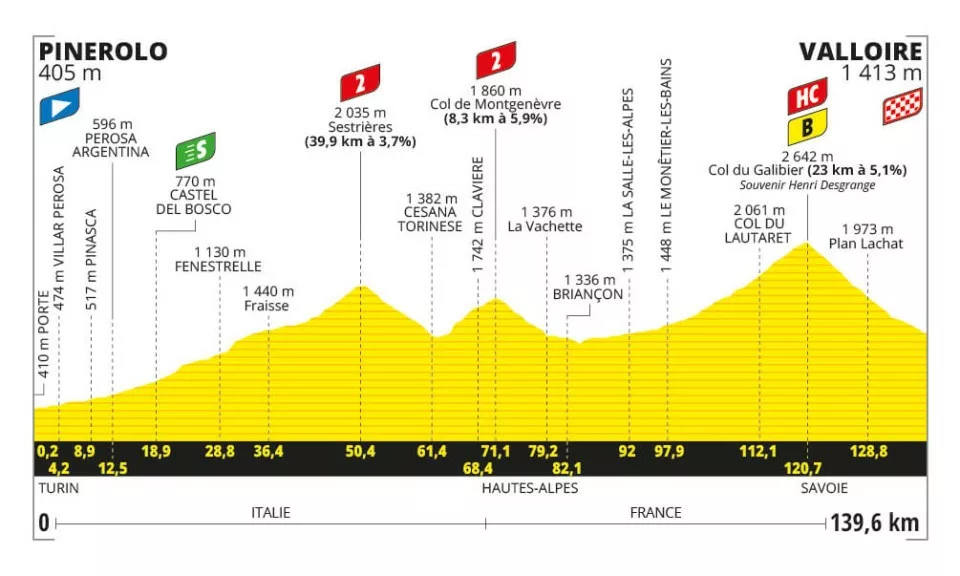
Stage 4: Pinerolo to Valloire, 139.6km
Crossing into France, this 139.6km stage marks the first mountain challenge with climbs over Sestriere, Col de Montgenèvre, and Col du Galibier. Although the final 19km are downhill, this early mountain stage could shake up the GC. Potential winner: Jonas Vingegaard.
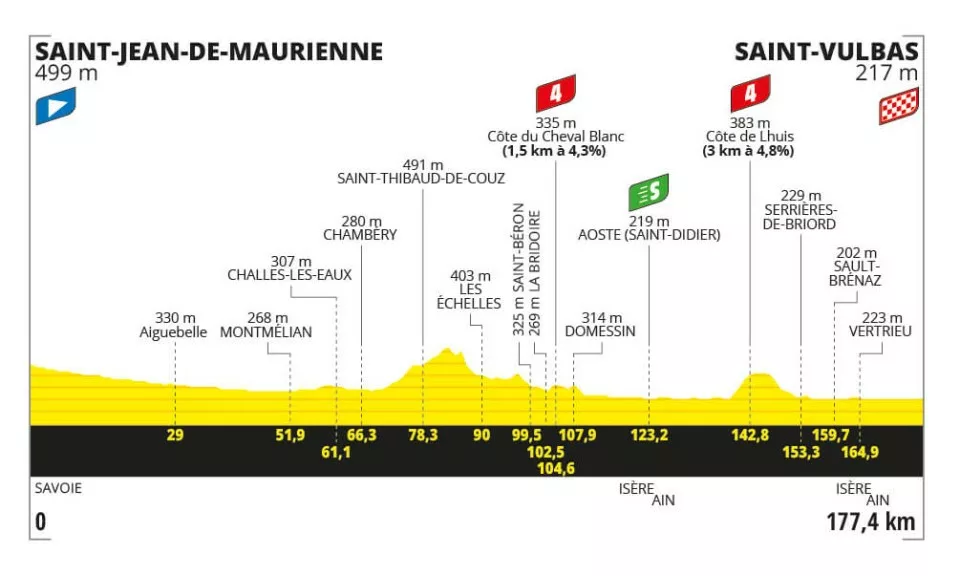
Stage 5: Saint-Jean-de-Maurienne to Saint-Vulbas, 177.4km
A respite for the sprinters with this 177.4km stage likely ending in a bunch sprint. After the high mountains, it offers a more straightforward route to Saint-Vulbas. Potential winner: Sam Bennett.

Stage 6: Mâcon to Dijon, 163.5km
Another chance for the sprinters with a 163.5km flat stage. The race to Dijon should provide back-to-back sprint opportunities, which are rare in Grand Tours these days. Potential winner: Jasper Philipsen.

Stage 7: Nuits-Saint-Georges to Gevrey-Chambertin, 25.3km Individual Time Trial
The first individual time trial, over 25.3km, features rolling terrain and a late 1.6km climb. This stage allows rouleur GC contenders to gain time on lighter climbers. Potential winner: Filippo Ganna.

Stage 8: Semur-en-Auxois to Colombey-les-Deux-Églises, 183.4km
The 183.4km route might favour sprinters despite rolling terrain and late climbs. Alternatively, punchy riders could seize the opportunity, but a sprint finish seems more likely. Potential winner: Wout van Aert.

Stage 9: Troyes to Troyes, 199km
A unique stage with 14 gravel sectors, totalling 32km, will challenge the peloton. The final sectors within the last 35km could cause mechanical issues and significant time losses for GC contenders. Potential winner: Mathieu van der Poel.

Stage 10: Orléans to Saint-Amand-Montrond, 187.3km
A flat 187.3km stage offers sprinters another chance, but potential crosswinds could create echelons, reminiscent of past races where the weather played a crucial role. Potential winner: Jasper Philipsen.

Stage 11: Évaux-les-Bains to Le Lioran, 211km
With over 4,000m of climbing packed into the final quarter of this 211km stage, riders will face serious challenges in the Massif Central, potentially impacting the GC battle. Potential winner: David Gaudu.
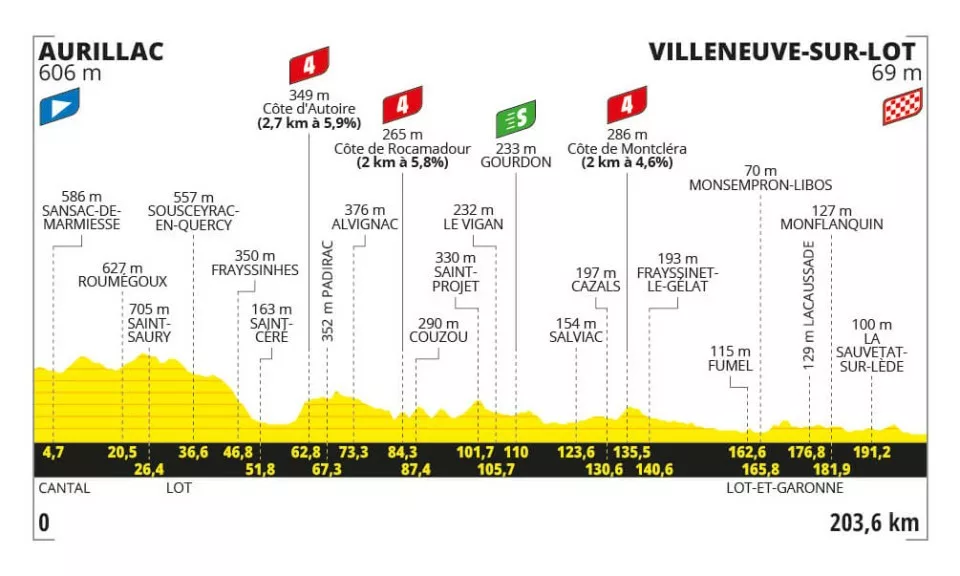
Stage 12: Aurillac to Villeneuve-sur-Lot, 203.6km
Another lengthy stage at 203.6km, features fewer obstacles, making it ideal for sprinters if they can control the breakaway. Potential winner: Mark Cavendish.
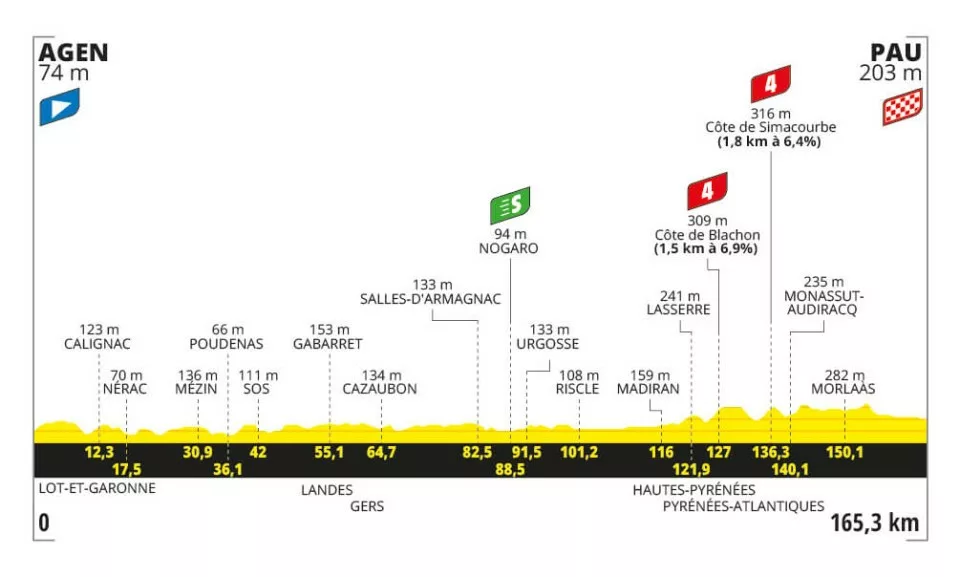
Stage 13: Agen to Pau, 165.3km
Reaching Pau, known as the Gateway to the Pyrenees, this 165.3km stage includes late hills favouring breakaways but remains within sprinters’ reach. Potential winner: Wout van Aert.

Stage 14: Pau to Saint-Lary-Soulan Pla d’Adet, 151.9km
The first mountain top finish at Pla d’Adet follows the Hourquette d’Ancizan and Tourmalet climbs. This 151.9km stage will be critical for GC contenders. Potential winner: Tadej Pogačar.

Stage 15: Loudenvielle to Plateau de Beille, 197.7km
On Bastille Day, the Tour’s toughest stage with five climbs over 197.7km and nearly 5,000m of ascent. The Plateau de Beille summit finish could see significant shifts in the GC. Potential winner: Egan Bernal.

Stage 16: Gruissan to Nîmes, 188.6km
Post-rest day, this flat 188.6km stage offers a breakaway opportunity, but sprinters might still contest the win as they head towards the Alps. Potential winner: Jasper Philipsen.
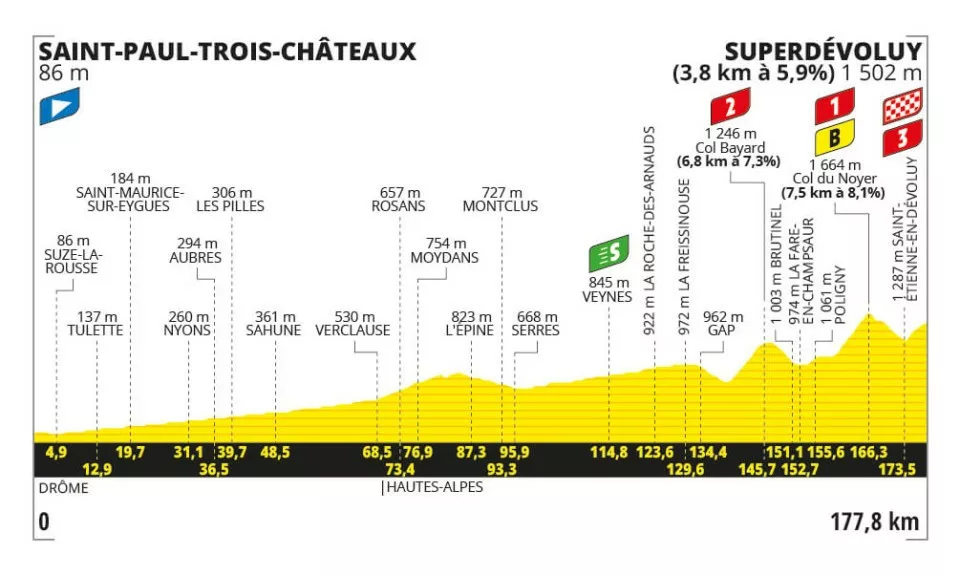
Stage 17: Saint-Paul-Trois-Châteaux to Superdévoluy, 177.8km
Featuring the Col de Noyer before a climb to Superdévoluy, this 177.8km stage introduces another test for GC riders and the potential for breakaways. Potential winner: Romain Bardet.

Stage 18: Gap to Barcelonnette, 179.5km
A mountainous 179.5km stage, yet not as severe as those preceding it. Focus may shift to stage-hunting riders rather than the GC contenders. Potential winner: Michael Woods.

Stage 19: Embrun to Isola 2000, 144.6km
High-altitude climbs dominate this 144.6km stage, including Cime de la Bonnette, the race’s highest point at over 2,800m, making it one of the toughest days. Potential winner: Richard Carapaz.
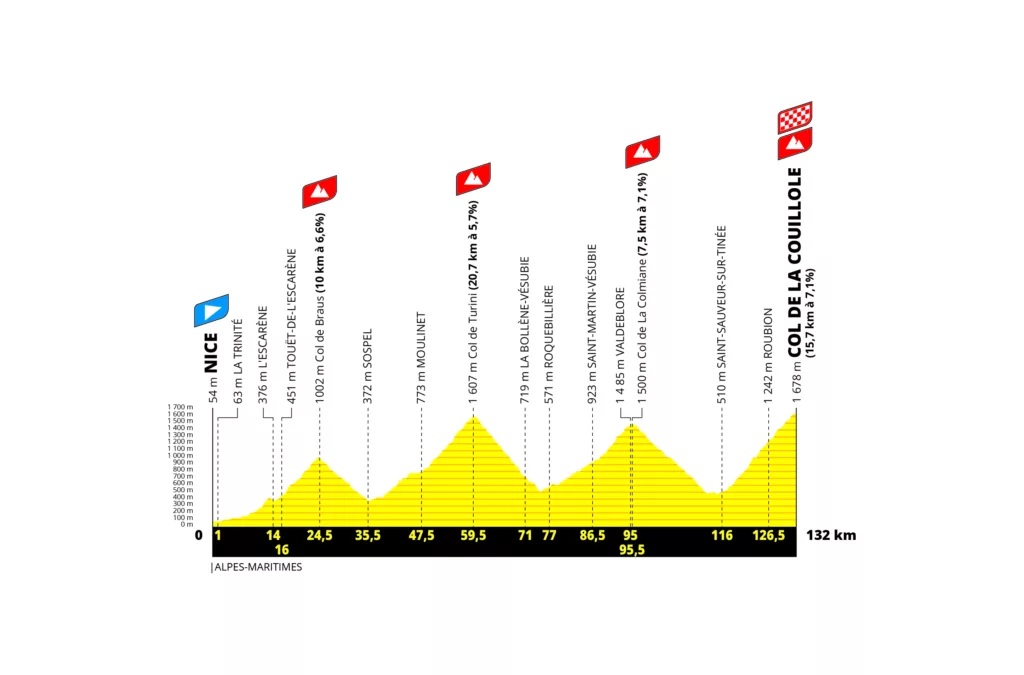
Stage 20: Nice to Col de la Couillole, 132.8km
A short yet gruelling 132.8km stage featuring four significant climbs, including a summit finish at Col de la Couillole, crucial for final GC standings. Potential winner: Primož Roglič.

Stage 21: Monaco to Nice, 33.7km Individual Time Trial
For the first time, the Tour de France concludes with a time trial in Nice. This 33.7km stage, with climbs over La Turbie and Col d’Eze, ensures the yellow jersey could change hands until the very end. Potential winner: Remco Evenepoel.


